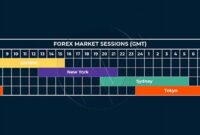Navigating the complexities of currency exchange can be daunting, especially for newcomers. A foundational understanding of the foreign exchange market and its derivative instruments is essential for successful speculation and hedging. This is where a comprehensive introductory resource on currency options becomes invaluable, offering a structured approach to learning the intricacies of this specialized trading domain.
Understanding Options Contracts
Options contracts grant the buyer the right, but not the obligation, to buy or sell a currency pair at a predetermined price (the strike price) on or before a specific date (the expiration date). This flexibility distinguishes options from futures contracts, which obligate the buyer to fulfill the contract.
Call and Put Options
Two primary types of options exist: calls and puts. A call option provides the right to buy, while a put option provides the right to sell. Traders choose the option type based on their market outlook.
Option Premiums
The cost of acquiring an option is known as the premium. Several factors influence premium pricing, including the underlying asset’s volatility, time to expiration, and the difference between the current market price and the strike price.
Expiration Dates
Options contracts have specific expiration dates. Understanding how the time decay of options affects their value is crucial for effective trading strategies.
Mitigating Risk with Options
Options can be utilized to hedge against adverse currency movements, protecting investments from potential losses. This risk management capability is a significant advantage for businesses and individuals with foreign exchange exposure.
Leverage and Potential Returns
Options trading offers significant leverage, allowing traders to control larger positions with a smaller initial investment. This leverage can amplify both profits and losses.
Developing a Trading Strategy
A well-defined trading strategy is essential for success in options trading. This strategy should encompass market analysis, risk tolerance, and clearly defined entry and exit points.
Continuous Learning and Practice
The foreign exchange market is dynamic and complex. Continuous learning, practice, and adaptation are vital for staying informed and refining trading skills.
Tips for Beginners
Start with a Demo Account: Practice trading strategies without risking real capital.
Focus on a Single Currency Pair: Develop expertise in one currency pair before expanding to others.
Manage Risk Carefully: Utilize stop-loss orders and other risk management tools.
Stay Informed: Keep up-to-date on market news and economic events.
Frequently Asked Questions
What are the benefits of trading forex options?
Forex options offer flexibility, risk management capabilities, and potential for leveraged returns.
What are the risks involved in options trading?
Potential losses can exceed the initial premium paid. Understanding the risks is crucial before engaging in options trading.
How do I choose the right options strategy?
Choosing a strategy depends on market outlook, risk tolerance, and trading goals. Research and education are essential.
Where can I learn more about forex options trading?
Reputable online resources, educational platforms, and financial advisors can provide valuable information.
What is the difference between American and European style options?
American style options can be exercised at any time before expiration, while European style options can only be exercised at expiration.
How does volatility affect option pricing?
Higher volatility generally leads to higher option premiums.
Mastering the intricacies of options trading requires dedication, discipline, and a commitment to continuous learning. A well-informed approach, coupled with a robust risk management strategy, can pave the way for successful navigation of this complex yet potentially rewarding market.



